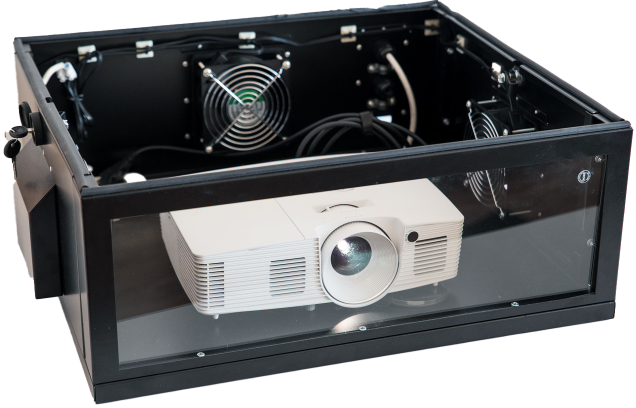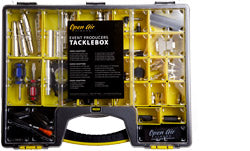What is Contrast Ratio?

Why would you buy a new television - or better yet, a new projector - without really studying the quality of the picture it delivers? The answer is you wouldn't, of course. It's safe to assume that, like any shrewd consumer, you're staring at the projector in the store, trying to determine if it is indeed an improvement. You look at the sharpness of the image. You look at the coloring. You search for any trace of distortion or fuzziness in the image. But, the quest for the highest quality picture shouldn't end when you decide to buy the projector. On the contrary, when you get home and you've got it all set up, you're going to want to tweak all kinds of different aspects in your settings menu, in order to get the perfect image. In this post we're going to talk about one of the trickiest aspects of your picture - the contrast ratio.
What is the Contrast Ratio?
Contrast Ratio is most easily explained as the difference between a projector's brightest possible image and its darkest possible image.If you were to phrase it as a math equation, it would like X:1 = contrast ratio. In this equation, the X represents the amount of luminance a projector can display when pointed at a white screen. Luminance is a metric by which we measure the intensity of light as it goes through a screen. In other words, the brighter the light, the higher the luminance. Meanwhile, the number 1 represents our constant - in this case a black screen which would absorb most of the light that hits it.So, when you buy a projector that has a contrast ratio of 3,000:1, you have a projector whose white light is 3,000 times whiter than its black. The higher the contrast ratio, the better the picture will look.
A Tricky Truth to Consider
The above equation is the best way to represent contrast ratio mathematically. However, it is important to note that there is no standard measure of luminance agrees upon by all projector manufacturers. What that means is that one manufacturer may decide that the maximum output of a pixel in your screen at a level of luminance that is very high, while another may set the standards of their luminance lower. While that does not mean that contrast ratio is a meaningless and relative standard to measure picture quality, it does mean that you cannot always rely on the manufacturer is telling you. However, a basic understanding of the aspects of contrast will still help you get the best picture possible. Native Ratio Versus Dynamic Ratio Native ratio and dynamic ratio are two aspects of your projector's contrast that you'll want to consider when you make your purchase. We'll start with native first. The native ratio on a projector represents the extent of the device's innate abilities with contrast. It is essentially the ratio between how dark the darkest part of the image is and how bright the brightest part of the image is. If you buy a projector and leave it alone, you'll probably be looking at the device's native contrast ratio.Dynamic ratio, on the other hand, is a somewhat broad term to describe certain technologies in the projector that help improve upon the device's native ratio. In newer models of projector and television, the dynamic ratio works automatically, sensing the nature of the image it is presenting and adjusting the light output of the pixels accordingly. When you adjust the backlight on an LCD television, you've essentially messed with the dynamic ratio. The difference is that the dynamic ratio on a new projector will do this in real time as the images change on the screen. When a dark image appears on the screen, the projector automatically adjusts itself to be naturally more darker. This makes the blacks blacker and it highlights the bright aspects of the picture as well. Conversely, when the projector is showing a very bright image, it increases the total light output and decreases the black levels.
What You Want All of this explanation is basically to say that if you want a picture quality that features deep black levels and brights that really stick out, you want a projector with a high native contrast ratio. In this way you can have the best of both worlds - the tunnel is deep and dark, but the light at the end of that tunnel truly pops. Right now the technology which comes with the highest native contrast is LCOS, liquid crystals on silicon. However, you might find that a different technology that comes with good dynamic ratio can offer you a similar quality of picture. If the contrast in your picture is important to you, start tweaking with levels on models in the store, or read reviews online. Now that you know what to look for, a little bit of research will get you far in the quest for the perfect picture.




